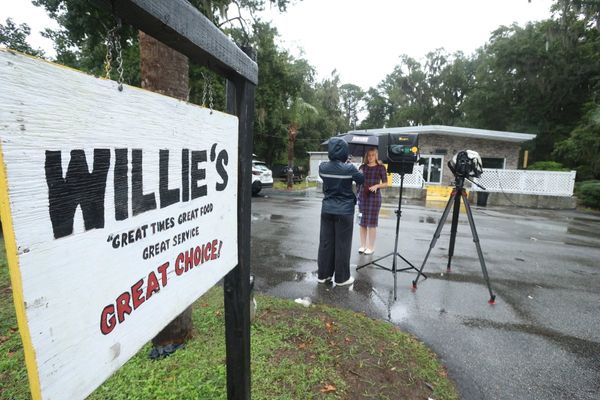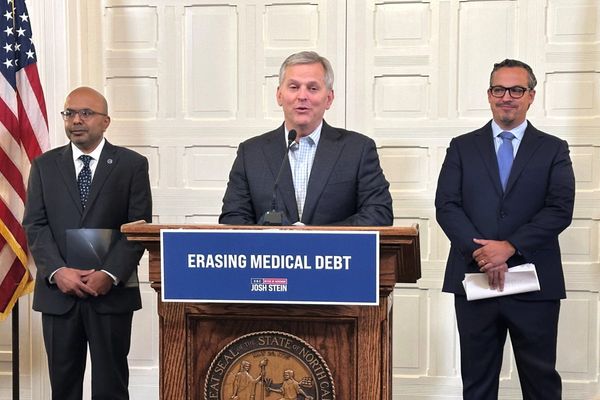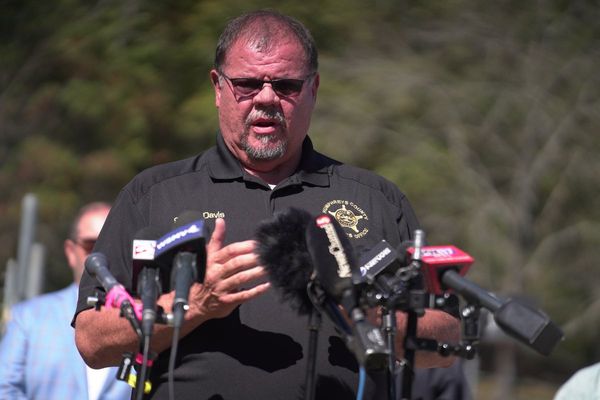The ADP jobs report, which has taken on more significance with the government shutdown delaying official data, showed that the private sector cut jobs in September, defying forecasts of moderate growth. The S&P 500 was moderately lower as the shutdown raises near-term economic risk. Tesla turned higher with Q3 delivery figures expected early Thursday.
With no BLS jobs report, Wall Street and the Fed will depend more on other releases, including payroll processor ADP's monthly estimate of private-sector job gains. The Institute for Supply Management's manufacturing survey index for September also had a weak employment reading, though not as bad as in August. The start of the government shutdown, which will take an increasing economic toll the longer it drags on, is making an Oct. 29 Fed rate cut look even more certain.
10:05 a.m. ET
ISM Manufacturing Index Remains Soft
The ISM manufacturing survey index edged up to 49.1 in September from 48.7, still consistent with a slight contraction. Production picked up, but the new order index turned negative, with a sub-50 reading. The employment index rose to 1.5 points to 45.3, but still showed less need for labor.
9:58 a.m. ET
Stocks Fall Modestly, Yields Skid
The S&P 500 fell 0.4% in Wednesday morning trade after the weak ADP jobs figures and the government shutdown. The 10-year Treasury yield declined several basis points to 4.09%.
The September ISM manufacturing index and August consumer spending data are due at 10 a.m. ET.
8:35 a.m. ET
Futures Hold Decline, Treasury Yields Fall
S&P 500 futures fell 0.4%, about where they were before the 8:15 a.m. ET ADP report. The 10-year Treasury yield fell a few basis points to 4.11%.
8:33 a.m. ET
ADP Impact On Government Shutdown?
News that the economy is shedding jobs will likely amp up pressure on both political parties to reach a quick deal to reopen the government. That doesn't mean they will.
8:31 a.m. ET
Fed Rate-Cut Odds Jump
Markets now see 100% odds of an Oct. 29 rate cut. Odds of a further quarter-point rate cut on Dec. 10 jumped to 87% from 77%.
8:29 a.m. ET
Broad Jobs Weakness
ADP's industry data showed weakness pretty much across the board, with the exception of education and health services, which added 33,000 jobs. Goods-producing industries shed 3,000 jobs and service-providing industries 28,000. Leisure and hospitality jobs fell by 19,000, professional business services 13,000 and financial activities 9,000.
8:23 a.m. ET
ADP Report: 32,000 Private Jobs Cut
ADP showed the private sector cut 32,000 jobs vs. forecasts of a 50,000 gain. August was revised to a decline of 3,000 private jobs vs. the initial report of 54,000 jobs added.
ADP Forecast
Economists expect ADP to show that private-sector firms added 50,000 workers to payrolls in September, little changed from 54,000 in August.
ADP has a spotty track record of predicting what BLS jobs report will show, generally two days later. Recently, though, ADP did do a good job of telegraphing the job market slowdown over the past four or five months.
Government Shutdown Impact
If the government shutdown lasts a week or less, it will have a negligible impact on the economy. However, with both sides digging in, this shutdown may last a while. The Polymarket prediction market shows 59% odds that the shutdown will run for at least 10 days and 16% odds it could last 30 days or longer.
Given that no appropriations bills have passed, a shutdown would likely sideline all nonessential federal employees. Deutsche Bank estimates that a full government shutdown will put 800,000 federal employees on furlough, similar to the first week of 2013 shutdown. On top of that, Moody's Analytics estimated that 1.2 million essential federal workers went without pay until that shutdown ended and "a couple of hundred thousand private sector employees, many at defense contractors, could not work" and were unlikely to receive back pay.
Deutsche Bank estimates that each week a shutdown continues will slice two-tenths of a percentage point off of quarterly GDP.
Typically, any economic damage from a shutdown is fleeting, since both furloughed and essential workers end up receiving the same pay they would have gotten without a shutdown. However, there's some risk that the effects could linger this time, if the Trump administration makes good on its threat to turn a shutdown into a cause for further shrinking the federal workforce in areas outside the president's priorities.
Deutsche Bank's Brett Ryan notes that 110,000 federal workers who have taken buyout packages were already expected to come off the federal payroll at the end of September. Deeper government job cuts would come at a time that payroll growth has slowed to a crawl and the unemployment rate, though still low, is at its highest level since late 2021.
S&P 500
S&P 500 futures slipped 0.4% in early Wednesday stock market action. That follows a two-day rally that lifted the S&P 500 to within 0.1% of its Sept. 22 all-time closing high.
The S&P 500 has climbed 13.7% year to date. Be sure to read IBD's The Big Picture column after each trading day to get the latest on the prevailing stock market trend and what it means for your trading decisions.







